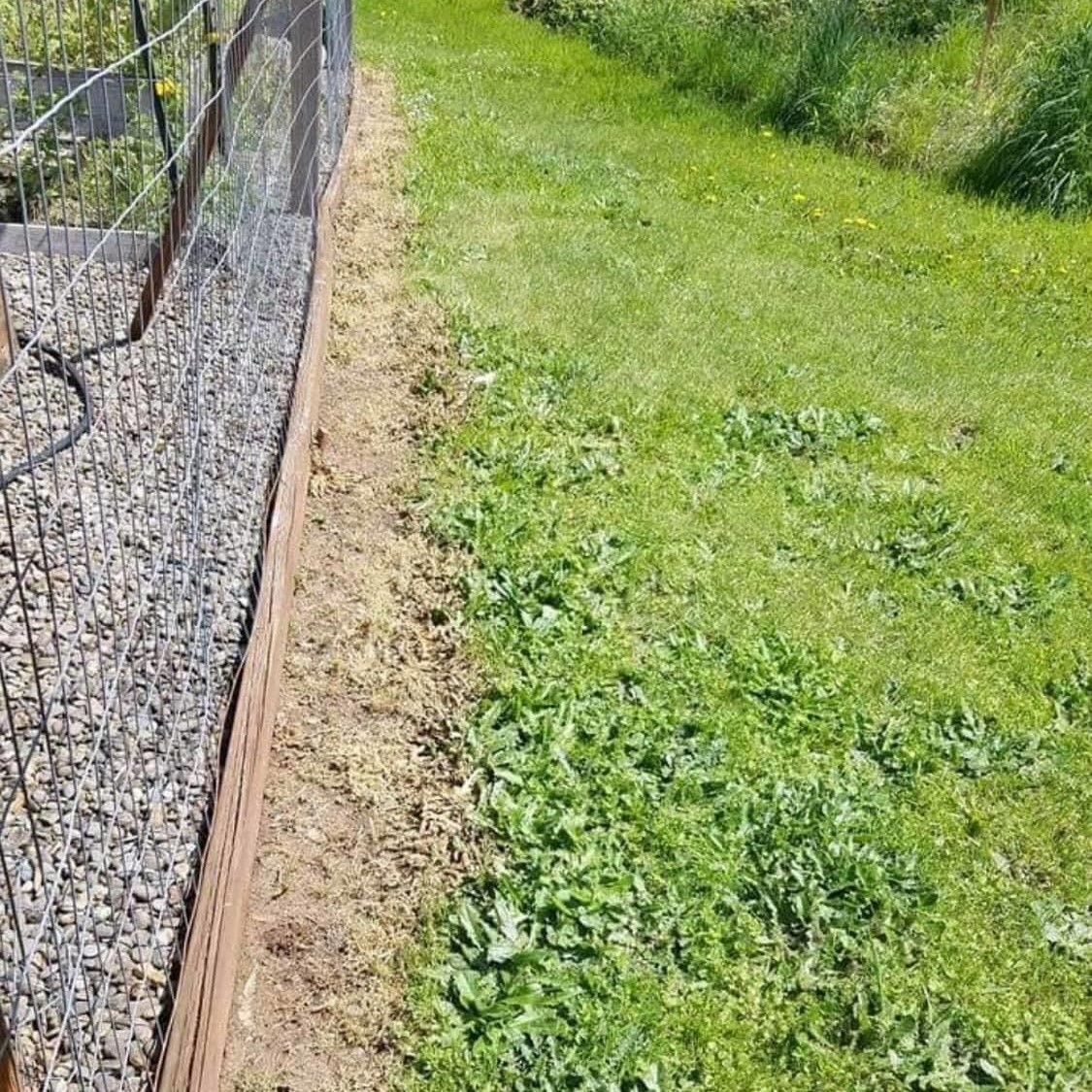#2. Landscaping Fabric
Landscaping fabric acts as a physical barrier that blocks light and restricts weed growth while allowing air, water, and nutrients to penetrate the soil, ensuring garden plants thrive without competition.
When using landscaping fabric, you should start by laying it over the soil, ensuring the entire area is covered. Secure the fabric with garden staples to keep it in place, which is especially important in windy conditions.
After that, cover the fabric with a layer of mulch, usually about 2-3 inches thick, to improve its appearance and provide additional weed suppression.
#3. Care for The Garden
If you care the garden properly, plants will become healthy, which outcompete weeds by occupying available space and resources. Additionally, well-maintained soil structure and moisture levels can disrupt weed seed germination and root development.
You can also make use of drip irrigation and soaker hoses to minimize surface moisture and reduce weed seed germination. Targeted watering at the base of plants ensures they get the moisture they need without encouraging weed growth.
#4. Proper Plant Spacing
Imagine your garden covered by overcrowded plants, they will compete for water, nutrients, and sunlight, making them more vulnerable to weed invasion. Additionally, well-spaced plants improve air circulation, reducing the risk of disease.
Proper plant spacing ensures that garden plants receive adequate sunlight, water, and nutrients, allowing them to grow vigorously and form dense canopies. This dense plant coverage shades the soil, reducing the opportunity for weed seeds to germinate and establish.
#5. Hoeing
Hoeing disrupts the soil surface, cutting down weed seedlings before they can establish strong roots. Regular hoeing also aerates the soil, promoting garden plants to outcompete any emerging weeds.
I find it particularly useful because it’s easy to use and doesn’t require any chemicals. You only need to break up the top layer of soil to sever weed roots and prevent them from growing back.
For the best results, you should hoe early in the morning or right after rain when the soil is moist and weeds come out more easily. Maintain a sharp blade and angle it at about 30 degrees. Aim to cut just below the soil surface, about 1-2 inches deep. This technique ensures you sever the roots without disturbing too much soil.
#6. Tilling
Similar to hoeing, tilling turns over the soil, burying weed seeds and disrupting the root systems of existing weeds, making it harder for them to regrow. This process also aerates the soil, creating a more favorable environment for desired plants to thrive.
However, there are some downsides to consider. Tilling can potentially damage soil structure, especially if done too frequently or when the soil is too wet. This disruption can lead to soil erosion and loss of beneficial microorganisms. Therefore, it’s best to till before the planting season when preparing new beds or incorporating organic matter into the soil.
#7. Cover Crops
Cover crops create a dense ground cover that shades the soil, preventing weed seed germination and growth.
Additionally, their extensive root systems improve soil structure and fertility, enhancing the competitive ability over weeds. I’ve had great success with nitrogen-fixing plants like legumes, which not only suppress weeds but also add valuable nitrogen to the soil.
Fast-growing species like buckwheat are excellent for quickly covering bare ground and outcompeting weeds.
Besides, you can consider companion planting, such as marigolds with tomatoes or beans with corn, which can also help manage weeds and enhance plant growth. Also, marigolds release natural compounds that deter pests and suppress weed growth around tomatoes.
#8. Using Beneficial Organisms
Do you know beneficial organisms such as nematodes and mycorrhizae can manage garden weeds?. Nematodes are effective in attacking weed roots, while mycorrhizae enhance nutrient uptake.
Using beneficial organisms can suppress weed growth by feeding on weed seeds or roots, reducing their ability to germinate and establish. These organisms also enhance soil health and biodiversity, promoting stronger garden plants.
Incorporating cover crops creates a balanced ecosystem where these beneficial organisms can flourish, contributing to sustainable weed management practices. This approach reduces the need for chemical interventions and supports long-term garden health.
SEE NEXT PAGE
ADVERTISEMENT

